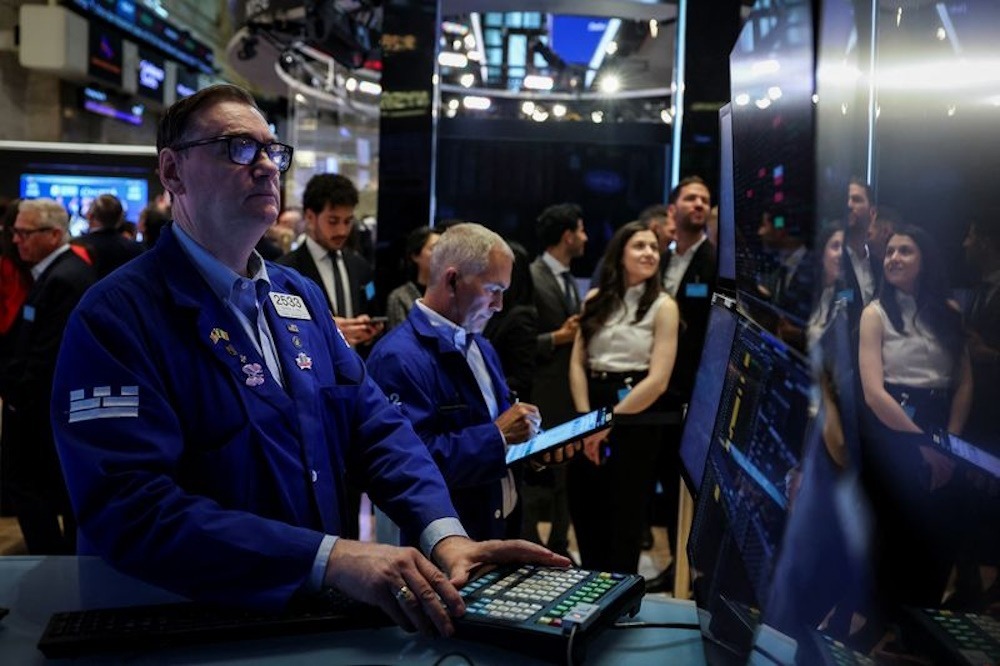
Nasdaq experienced an uptick on Wednesday as Supreme Court justices appeared skeptical regarding the extensive tariffs enacted by the Trump administration. Market participants anticipated that certain tariffs could be rescinded should the apex court issue an unfavorable ruling. Furthermore, concerns regarding a potential AI bubble burst appeared to be diminishing. Several robust economic indicators have enhanced investor confidence in the U.S. economy. All three major stock indexes concluded the trading session in positive territory. The Dow Jones Industrial Average rose 0.5%, equating to an increase of 225.76 points, concluding the session at 47,311.00. Significantly, 16 constituents of the 30-stock index concluded in positive territory, whereas 14 ended in negative territory. The tech-heavy Nasdaq Composite concluded at 23,499.78, reflecting an increase of 0.7% or 151.16 points, propelled by the robust performance of AI infrastructure leaders.
The S&P 500 experienced an increase of 0.4%, concluding the session at 6,796.29. Among the 11 broad sectors of the market index, nine concluded in positive territory, whereas two remained in negative territory. The Consumer Discretionary Select Sector SPDR rose 1.25%, while the Materials Select Sector SPDR increased by 0.6%. The fear gauge, the CBOE Volatility Index, experienced a decline of 5.2%, settling at 18.01. On Wednesday, the trading volume reached 19.17 billion shares, which is below the 20-session average of 20.96 billion shares. Advancers outnumbered decliners on the NYSE by a 2.09-to-1 ratio. On the Nasdaq, advancing issues outnumbered declining ones by a ratio of 1.84 to 1. On November 5, the Supreme Court commenced hearings regarding the legal legitimacy of the extensive tariffs imposed by the Trump administration. The arguments were grounded in the International Emergency Economic Powers Act of 1977. This legislation granted the President the authority to declare an economic emergency and implement measures accordingly.
Nevertheless, the legislation did not explicitly identify tariffs as a safeguard against economic adversities. U.S. Solicitor General D. John Sauer argued that “duties are not revenue-raising tariffs and are only incidental.” Nonetheless, the highest court’s trio of justices with liberal inclinations, alongside three conservative counterparts, posed critical inquiries concerning President Donald Trump’s power to enforce such tariffs. The group of justices, under the leadership of John Roberts, noted that “the vehicle is an imposition of taxes on Americans, and that has always been the core power of Congress.” The Supreme Court is presently characterized by a 6-3 conservative majority. Legal experts anticipate that the final verdict will be delivered after several weeks, potentially by the end of this year. Market recovered from Tuesday’s price decline, particularly within the AI infrastructure sector. Tuesday’s decline was attributed to profit-taking after three prominent investment banks issued valuation warnings regarding these stocks. Nevertheless, numerous financial analysts contend that the narrative surrounding AI, bolstered by the substantial expansion of cloud computing and data centers, has yet to reach its full potential.
Four of the “magnificent 7” stocks have opted to allocate a substantial $380 billion in 2025 for capital expenditure aimed at the development of AI infrastructure. This represents a notable 54% increase in capital expenditures on the AI ecosystem compared to the previous year. Furthermore, these companies have indicated that capital expenditures on AI are expected to rise significantly in 2026. ADP disclosed that private payrolls rose by 42,000 in October, surpassing the consensus estimate of 22,000. This starkly contrasts with the 29,000 jobs that were lost in September. Previously, ADP disclosed a reduction of 32,000 jobs in September. The Institute of Supply Management reported that the services PMI (purchasing managers’ index) for October increased to 52.4% from 50% in September. The consensus estimate stood at 50.5%. Any reading above 50% signifies an expansion in service activities. For the week ending Oct. 31, U.S. commercial crude oil inventories, excluding those in the Strategic Petroleum Reserve, saw an increase of 5.2 million barrels compared to the previous week.
